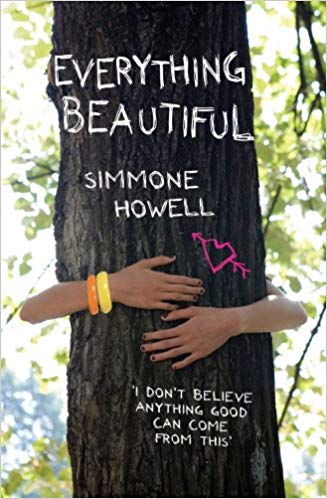 Riley Rose is an atheist, a cynic, and quite the rebel. She’s also fat, but she’s determined to make that irrelevant to her life. Her mother died a few years before the book opens and her dad turned all religious and acquired a super-Christian girlfriend. Riley is a bit of a party girl, and when she gets in trouble for breaking into a pool with a bunch of friends, her dad’s solution is to send her to church camp. Obviously.
Riley Rose is an atheist, a cynic, and quite the rebel. She’s also fat, but she’s determined to make that irrelevant to her life. Her mother died a few years before the book opens and her dad turned all religious and acquired a super-Christian girlfriend. Riley is a bit of a party girl, and when she gets in trouble for breaking into a pool with a bunch of friends, her dad’s solution is to send her to church camp. Obviously.
From the beginning, she plans to be uncooperative and hate all the ridiculous religious people. She says she will “go as a plague” and try to make life miserable for everyone else. She arrives and quickly makes a minor enemy out of her cabin-mate by stealing her bed. Things proceed from there about as you’d expect. Most of the other campers think she’s sinful and therefore a terrible person. But what Riley doesn’t expect is to make friends with a very odd girl (who “performs her ablutions” on the regular), an odd brother and sister pair, or meet a boy she likes even better than her current boy-of-the-month.
When she firsts sees Dylan, he’s wheeled himself onto the stage at the camp and when she throws a sprig of lavender at him, he eats it and she sees a kindred spirit—someone else who’s lost, moody, superior, and charged, as she thinks of herself. It isn’t until she gets in trouble at the same time as Dylan—not with him, just at the same time—that they start getting to know each other. As punishment, they’re tasked with clearing out a house of a recently dead old man’s possessions.
I liked Riley and rooted for her, though I didn’t really identify with her. She isn’t necessarily a very nice person all the time, with all her rebelling. But she’s still interesting to follow. Dylan is also cool to watch—he’s a little enigmatic for a while, but we start to get him more as Riley gets to know him. There aren’t a lot of books with characters in wheelchairs out there, and I learned some stuff from this book (note: do not touch someone’s chair). It’s also entertaining to watch Riley sort of move toward having faith in something—I didn’t take it that she became a Christian, but rather that she started to develop faith in the world, something she’d lost before. The ending is a little vague in that we’re not sure that Riley and Dylan will see each other again, but it’s clear that they’ve each changed as a consequence of meeting.
If you like reading about rebels, you will probably like this one.
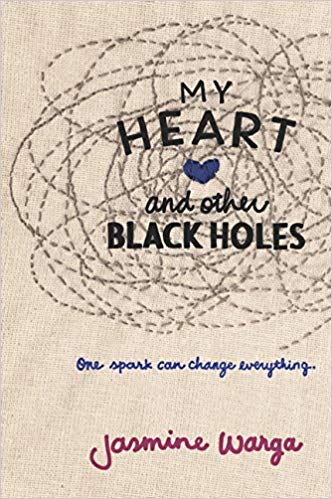 This is a quiet book about depression and how it can seemingly take over a person’s life and entire perspective, and then how to get away from it.
This is a quiet book about depression and how it can seemingly take over a person’s life and entire perspective, and then how to get away from it. Two Can Keep a Secret is the followup (not the sequel, that’s a different book) to McManus’s One of Us Is Lying, which I liked and
Two Can Keep a Secret is the followup (not the sequel, that’s a different book) to McManus’s One of Us Is Lying, which I liked and 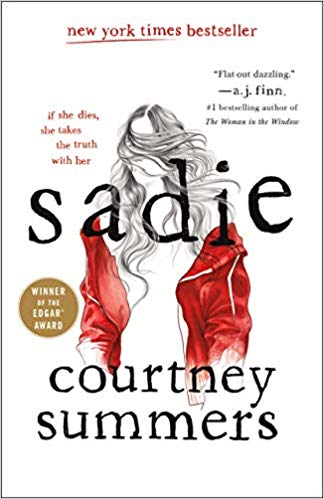 When I first heard about this book, I was sort of freaked out because of similarities it has with my own Sadie Speaks (still unpublished). I’m hoping I don’t have to change the name of my character because of it. Still, it sounded like an interesting book, so I bought it.
When I first heard about this book, I was sort of freaked out because of similarities it has with my own Sadie Speaks (still unpublished). I’m hoping I don’t have to change the name of my character because of it. Still, it sounded like an interesting book, so I bought it.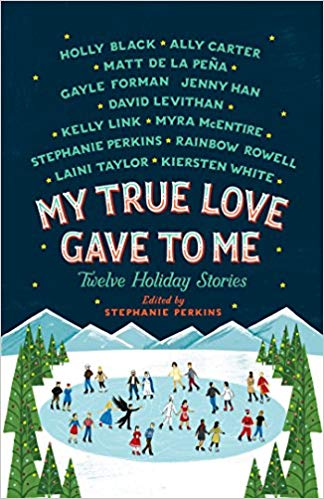 It’s probably a little odd to be doing a review of a holiday short story collection several weeks after the holidays ended, but since when did I claim to be normal. Besides, I started reading this before Christmas.
It’s probably a little odd to be doing a review of a holiday short story collection several weeks after the holidays ended, but since when did I claim to be normal. Besides, I started reading this before Christmas.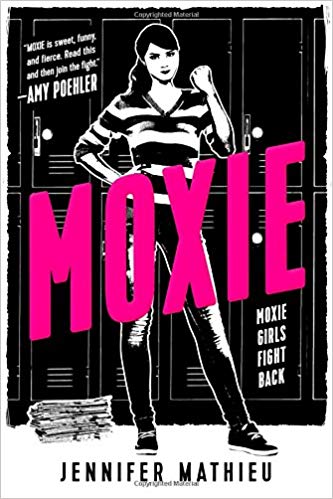 I wish I could remember how I found out about this book, because I’d like to go back and ask for more recommendations, because this was a great read.
I wish I could remember how I found out about this book, because I’d like to go back and ask for more recommendations, because this was a great read. I’ve just discovered a new gem in this author/artist. There were moments I was reading this when I thought Tung must have been channeling my thoughts word-for-word. Quiet Girl in a Noisy World: An Introvert’s Story is a memoir chronicling Tung’s life from late grad school at the University of Birmingham in England through her first real job. She reflects some on her childhood and basically shows how she came to realize that being shy and very introverted is okay, not something to be ashamed of. Her art style is subdued in black, white, and gray watercolors and I really liked it.
I’ve just discovered a new gem in this author/artist. There were moments I was reading this when I thought Tung must have been channeling my thoughts word-for-word. Quiet Girl in a Noisy World: An Introvert’s Story is a memoir chronicling Tung’s life from late grad school at the University of Birmingham in England through her first real job. She reflects some on her childhood and basically shows how she came to realize that being shy and very introverted is okay, not something to be ashamed of. Her art style is subdued in black, white, and gray watercolors and I really liked it.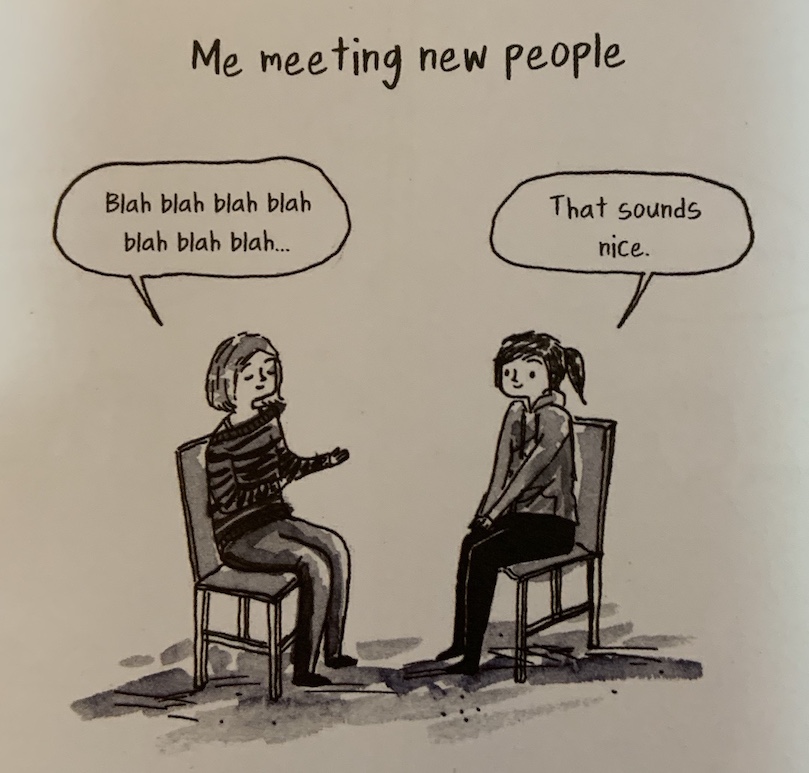
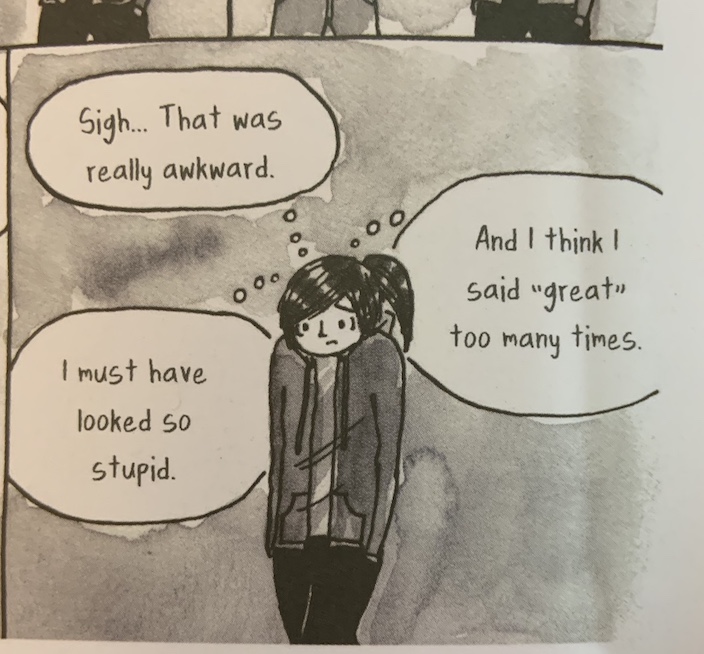
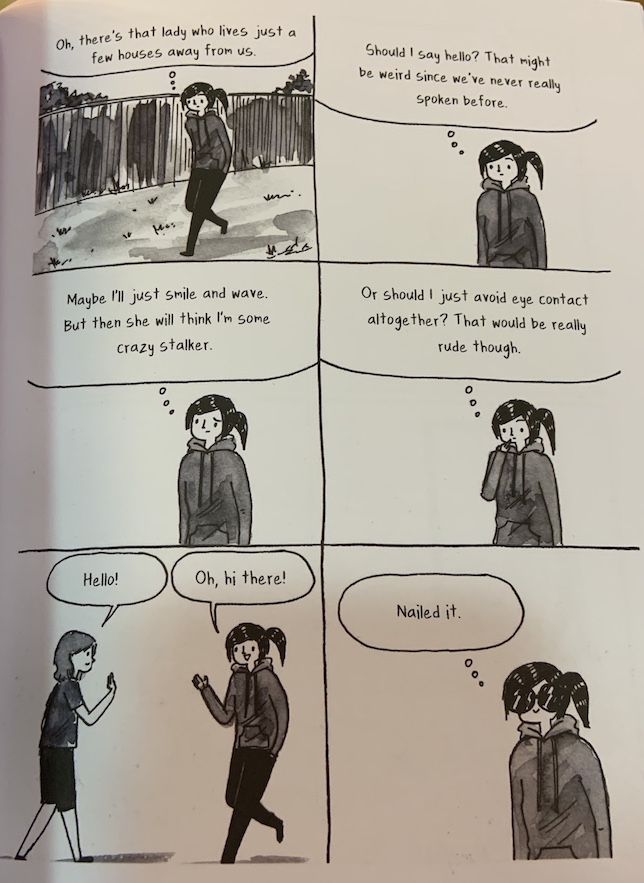
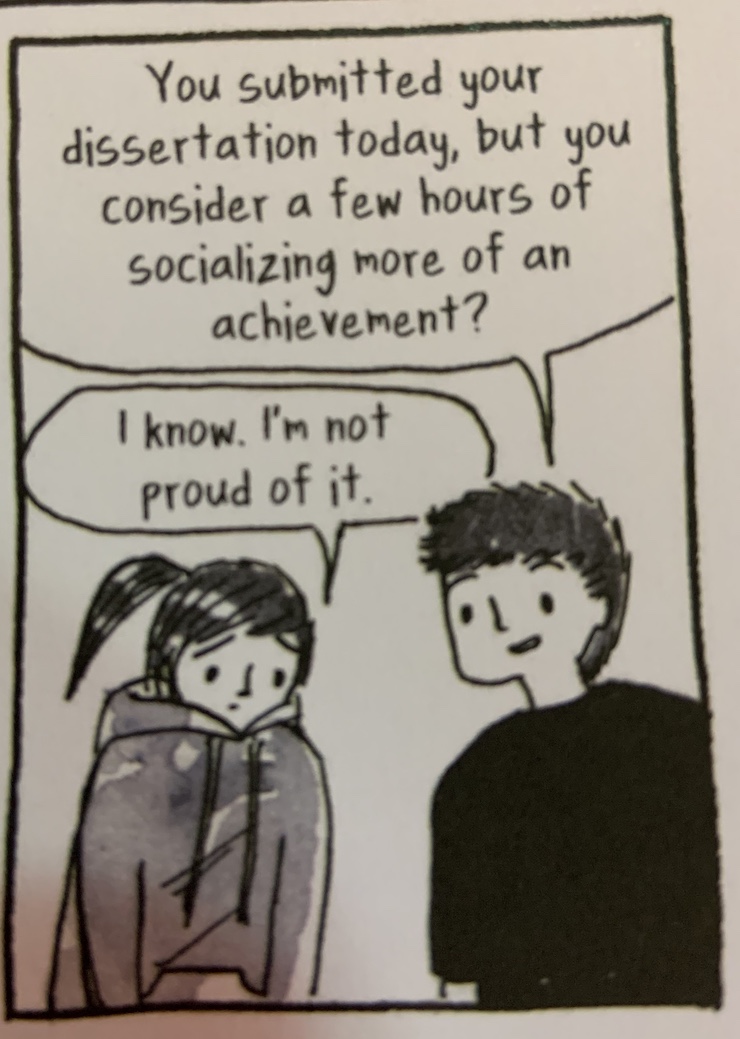
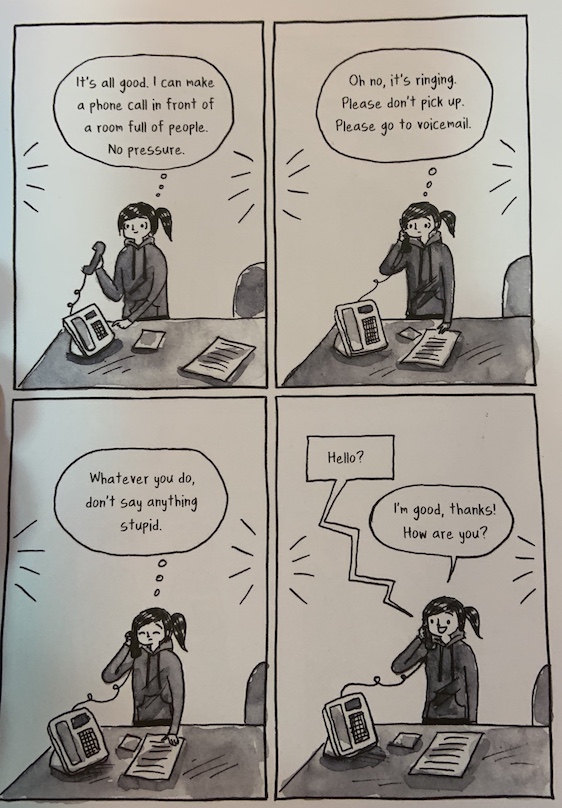
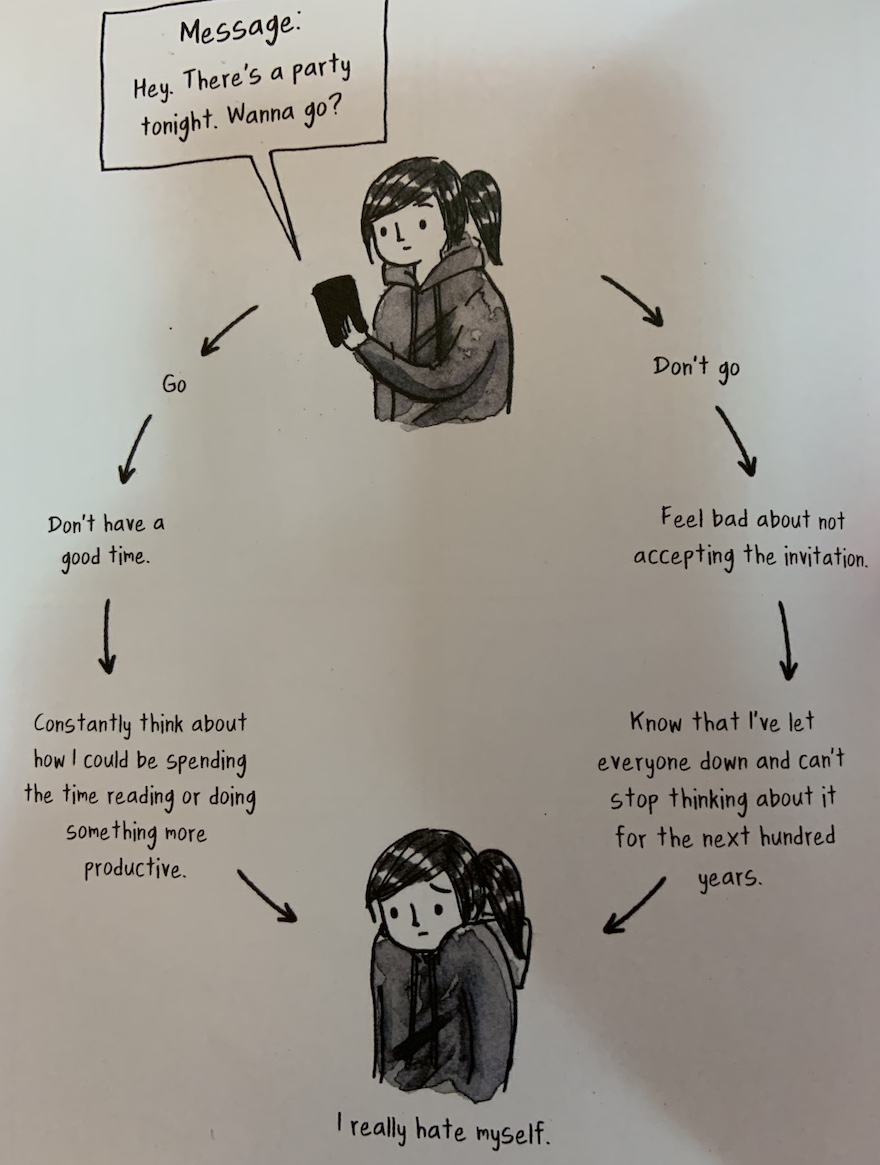
 The good news is that by the end of the book, she has discovered and accepted her introversion, and no longer beats herself up over it.
The good news is that by the end of the book, she has discovered and accepted her introversion, and no longer beats herself up over it.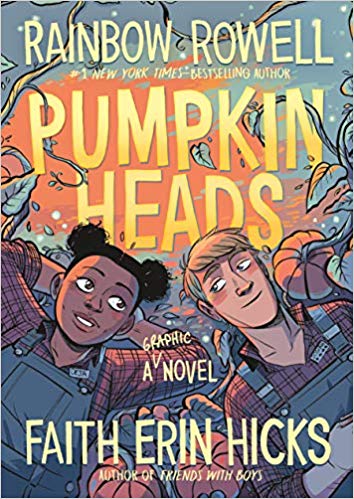 I’m a big Rowell fan because I think she does a fantastic job of capturing the emotional truth of people in her characters. I was new to Hicks, but I quite enjoyed this graphic novel. Hicks’ art was sharp and evocative. It felt like she used an autumn color palette, too, that comes across as seasonal and vivid.
I’m a big Rowell fan because I think she does a fantastic job of capturing the emotional truth of people in her characters. I was new to Hicks, but I quite enjoyed this graphic novel. Hicks’ art was sharp and evocative. It felt like she used an autumn color palette, too, that comes across as seasonal and vivid.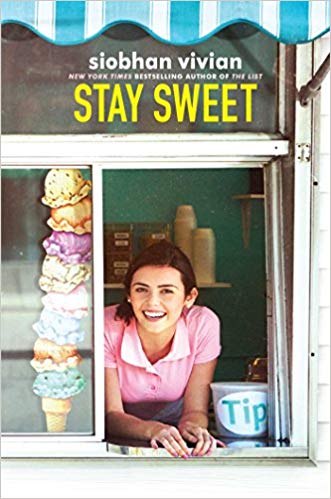 I heard about this book and put it at the top of my list since it was about a girl working in an ice cream stand, similar to one of my characters. I didn’t quite pick up the authenticity tidbits I’d hoped for (the situations were different), but I got to experience a good story.
I heard about this book and put it at the top of my list since it was about a girl working in an ice cream stand, similar to one of my characters. I didn’t quite pick up the authenticity tidbits I’d hoped for (the situations were different), but I got to experience a good story.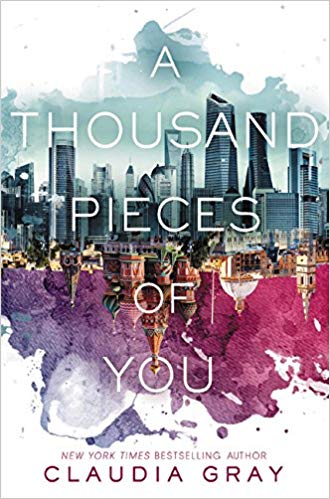 This is the first sci-fi I’ve read in a while, but I quite enjoyed it, despite some reservations I had and will address below. I consumed these three books as audiobooks, which I think were well-executed, all by the same narrator.
This is the first sci-fi I’ve read in a while, but I quite enjoyed it, despite some reservations I had and will address below. I consumed these three books as audiobooks, which I think were well-executed, all by the same narrator.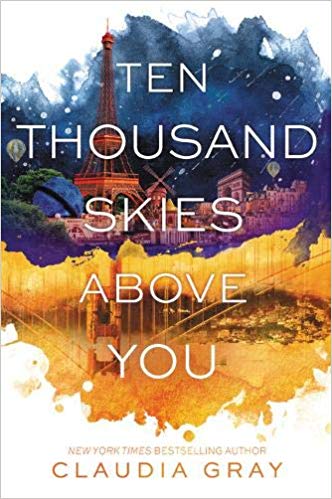 In the second book, Ten Thousand Skies Above You, Marguerite deals with a major conspiracy (I’m trying to not give away much here) involving multiple dimensions and her in a way she never would have expected. She travels to several different dimensions in this one. The conspiracy unfolds more and more, which is interesting and complicated. The love story gets complicated. Then the book ends on the worst kind of cliffhanger. At first everything seems great, and then in the last sentence, you discover it’s not.
In the second book, Ten Thousand Skies Above You, Marguerite deals with a major conspiracy (I’m trying to not give away much here) involving multiple dimensions and her in a way she never would have expected. She travels to several different dimensions in this one. The conspiracy unfolds more and more, which is interesting and complicated. The love story gets complicated. Then the book ends on the worst kind of cliffhanger. At first everything seems great, and then in the last sentence, you discover it’s not.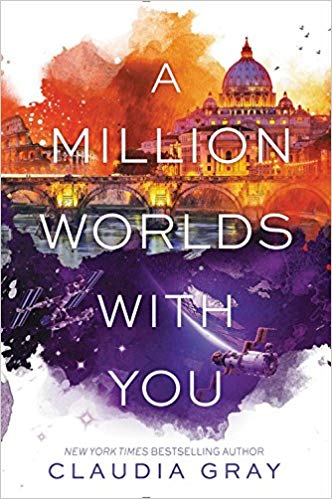 Additionally, I felt like the characters ignored the ethical ramifications of interrupting other people’s lives in other dimensions. This does eventually get somewhat addressed, but it bugged me throughout (especially some of Marguerite’s decisions along the way). And I should mention that some of Marguerite’s choices didn’t make a lot of sense to me.
Additionally, I felt like the characters ignored the ethical ramifications of interrupting other people’s lives in other dimensions. This does eventually get somewhat addressed, but it bugged me throughout (especially some of Marguerite’s decisions along the way). And I should mention that some of Marguerite’s choices didn’t make a lot of sense to me. I had heard of Federle because of his Better Nate Than Never middle grade series, but I’ve never read them. So The Great American Whatever was my introduction to him. It’s about a movie- and screenwriting-obsessed sixteen-year-old boy named Quinn. About five months before the book opens, Quinn’s sister Annabeth was killed in a car wreck, which has him devastated and not particularly functional. She was his filmmaking partner—they had a production company called Q&A Productions and Quinn envisioned them going to Hollywood together some day.
I had heard of Federle because of his Better Nate Than Never middle grade series, but I’ve never read them. So The Great American Whatever was my introduction to him. It’s about a movie- and screenwriting-obsessed sixteen-year-old boy named Quinn. About five months before the book opens, Quinn’s sister Annabeth was killed in a car wreck, which has him devastated and not particularly functional. She was his filmmaking partner—they had a production company called Q&A Productions and Quinn envisioned them going to Hollywood together some day.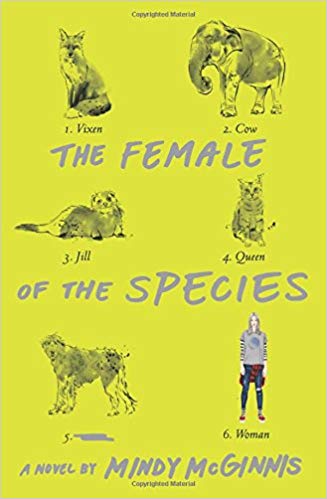 The first thing I have to say is that this is an unusual book. It’s about violence and rape culture, which means it’s wasn’t easy to read. But it felt worth reading.
The first thing I have to say is that this is an unusual book. It’s about violence and rape culture, which means it’s wasn’t easy to read. But it felt worth reading. I admit I’m a fan of Caletti, even though I haven’t yet read all of her books yet (I’m at about half). I love how she writes about mental health issues without making the stories issue books. So I was predisposed to like this one. Which was fine, because I did. I should mention that I listened to the audio book rather than read the paper book.
I admit I’m a fan of Caletti, even though I haven’t yet read all of her books yet (I’m at about half). I love how she writes about mental health issues without making the stories issue books. So I was predisposed to like this one. Which was fine, because I did. I should mention that I listened to the audio book rather than read the paper book. Normally I stick with YA here, but I couldn’t resist reviewing what is probably my favorite graphic novel series, even though it’s totally for kids.
Normally I stick with YA here, but I couldn’t resist reviewing what is probably my favorite graphic novel series, even though it’s totally for kids.